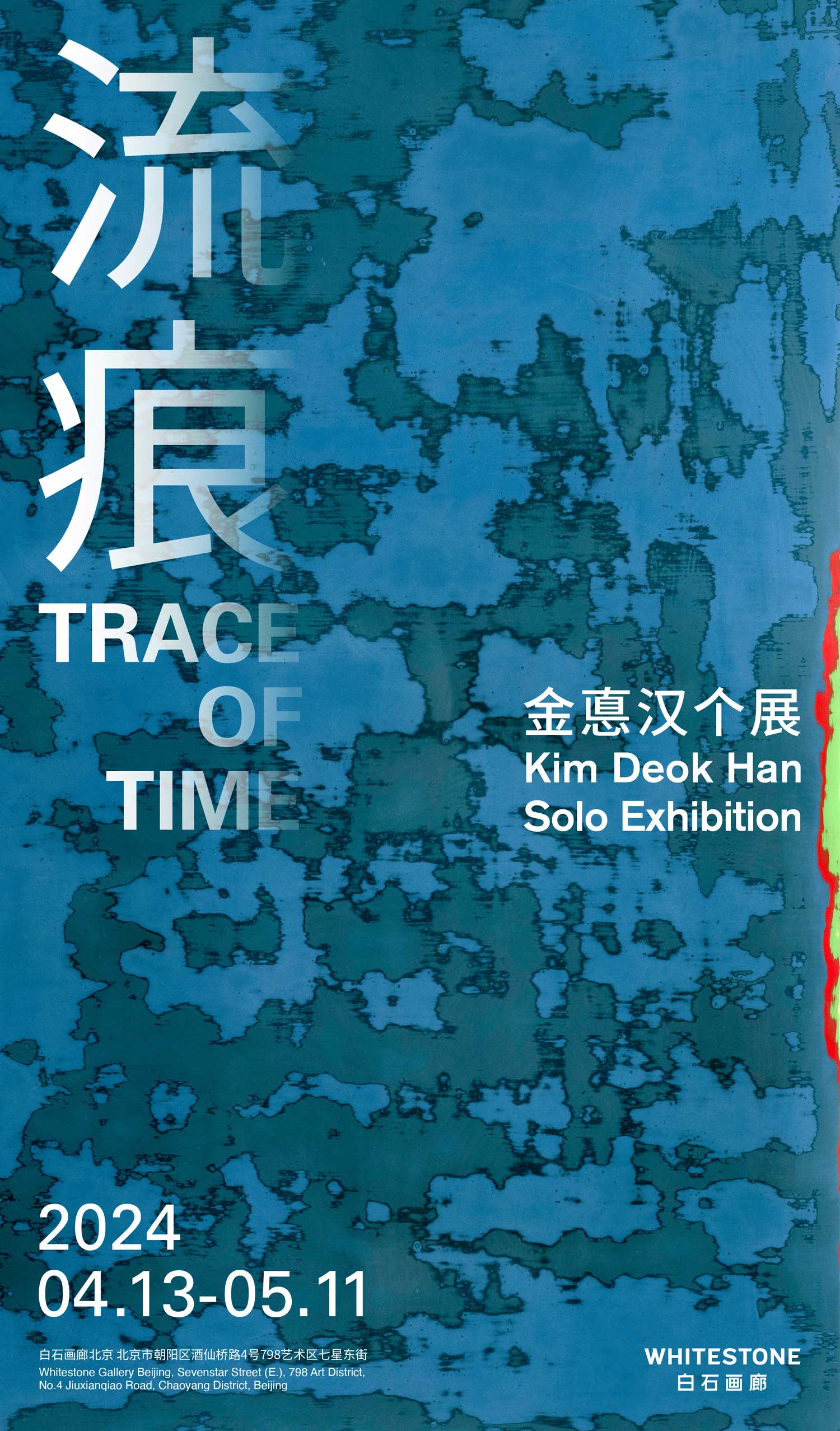展期 Period:
2024.4.13—2024.5.11
艺术家 Artist:
地点 Venue:
新闻稿 Press Release:
白石画廊北京欣然宣布将于2024年4月13日 - 5月11日期间,呈现艺术家金悳汉(b.1981)的个展“流痕”。 这是艺术家在北京空间的首次个展,开幕活动将于2024年4月13日周六下午3-5时进行,届时艺术家本人将莅临现场。 艺术家通过对过去时间的堆积和剥离,试图创造出一种能够将过去和现在置于“同一平面”的画面。
“堆积是每个人都能做的事情,但是重新审视这些堆积并不容易。”
情感、记忆、经历等,我们所有的一切都会随着时间的推移而自然堆积起来。我们当前的面貌是由累积的过去构成的。我在改变画面的同时重新审视过去的自己,通过不断地将过去的情感或经历表现为色彩,我也在不断地反思自己。
----金悳汉
金悳汉曾经在寺庙从事十年的佛像修复工作。在韩国庆州的一座寺庙里,他发现了一尊1000年历史的佛像,没有人知道它的存在。当他剥离佛像表面的时候,发现像俄罗斯套娃一样,几层佛像叠加在一起,形成了一尊全新的佛像,并因此找到了创作的灵感,他开始思考那些“若不细察就无法发现的事物”。正如漆树会分泌树脂来保护和治愈自己的伤口,艺术家也希望通过“漆”这样的材料制作出的作品,可以使观众们反思自己的生活,认识自己的内心,使生命中的伤痛都能得到疗愈。
金悳汉的作品通常会在按压下进行刮刻,因此艺术家主要在木质面板、不锈钢和铝等相对坚硬的材料上进行创作。一幅作品首先需要制作其木质面板,然后在上面覆盖棉布或亚麻布,并用传统的方法填补表面的孔隙,由此重复堆积和剥离的工序。通过这种方式,一件件作品逐渐成形。同时通过混合各种无机颜料到“漆料”中,艺术家创造出他独特的颜色,这些颜色代表着个人生命中的记忆、情感和经历。
此次展览的主要系列作品《迭色系列 No. 24-01》的灵感来自电影《星际穿越》的主题曲《First Step》。艺术家希望在这次展览中表达出人类迈向未知宇宙的第一步时的恢弘、战栗与兴奋。这部电影涉及到时间和空间的扭曲,以及过去与未来之间连接和信息的重要性,这与艺术家的作品主题密切相关。因此,他借助可以将声音转换为视觉的公司APO SOUND的帮助,将音乐转换为颜色,并通过分析数据,对颜色的分布和感知进行调整。艺术家通过打磨使画面时而粗糙,时而柔软,以色彩的对比呼应音乐节奏的变化。
Whitestone Gallery Beijing is pleased to announce that from 13 April - 11 May 2024, it will present "Trace of Time", a solo exhibition by Kim Deok Han (b.1981). This is the artist's first solo exhibition in the Beijing space, and the opening will be held on Saturday, 13 April 2024, from 3-5pm, with the artist himself in attendance. By piling up and removing time from the past, the artist tries to create an image that puts the past and the present on the "same plane".
"Piling up is something everyone can do, but revisiting those piles isn't easy."
Emotions, memories, and experiences, everything about us naturally accumulates over the course of time. Our current mould is made up of accumulated past. I revisit my past self while changing the picture. By constantly expressing my past emotions or experiences into colors, I am also constantly reflecting on myself.
---- Kim Deok Han
Kim Deok Han has been working on the restoration of Buddha statues at temples for ten years. At a temple in Gyeongju, Korea, he discovered a 1,000-year-old Buddha statue that no one knew existed. When he peeled off the surface of the statue, he found that several layers of the statue had been stacked on top of each other like Russian nesting dolls to form a completely new statue and found inspiration for his work and began to think about "things you can't see if you don't look closely". Lacquer trees secrete resin to protect and heal their wounds. I hope that through the works made with this material, viewers will be able to reflect on their own lives and recognize their own hearts, and that the wounds in our lives will be healed.
His work is usually scraped under pressure and therefore mainly on relatively hard materials such as wooden panels, stainless steel and aluminum. The wooden panels are first made, then covered with cotton or linen and the pores in the surface are filled in the traditional way, beginning with a repetitive process of stacking and stripping. In this way the work is gradually completed. By mixing various inorganic pigments into the “lacquer paint” at the same time, he creates his own unique colors, which represent memories, emotions and experiences.
The main series of works in this exhibition, OVERLAID SERIES No. 24-01, is inspired by the theme song "First Step" from the film Interstellar. The artist wishes to express in this exhibition the grandeur, tension and excitement of mankind's first step into the unknown universe. The film deals with the distortion of time and space, as well as the importance of connections and information between past and future, which is closely related to the theme of his work. Therefore, with the help of APO SOUND, a company that can convert sound into vision, he converted the music into colors and analyzed the data to adjust the distribution and perception of the colors. The artist responds to the tension of the musical rhythms and the corresponding contrast of colors by sanding, sometimes roughly, sometimes softly.

